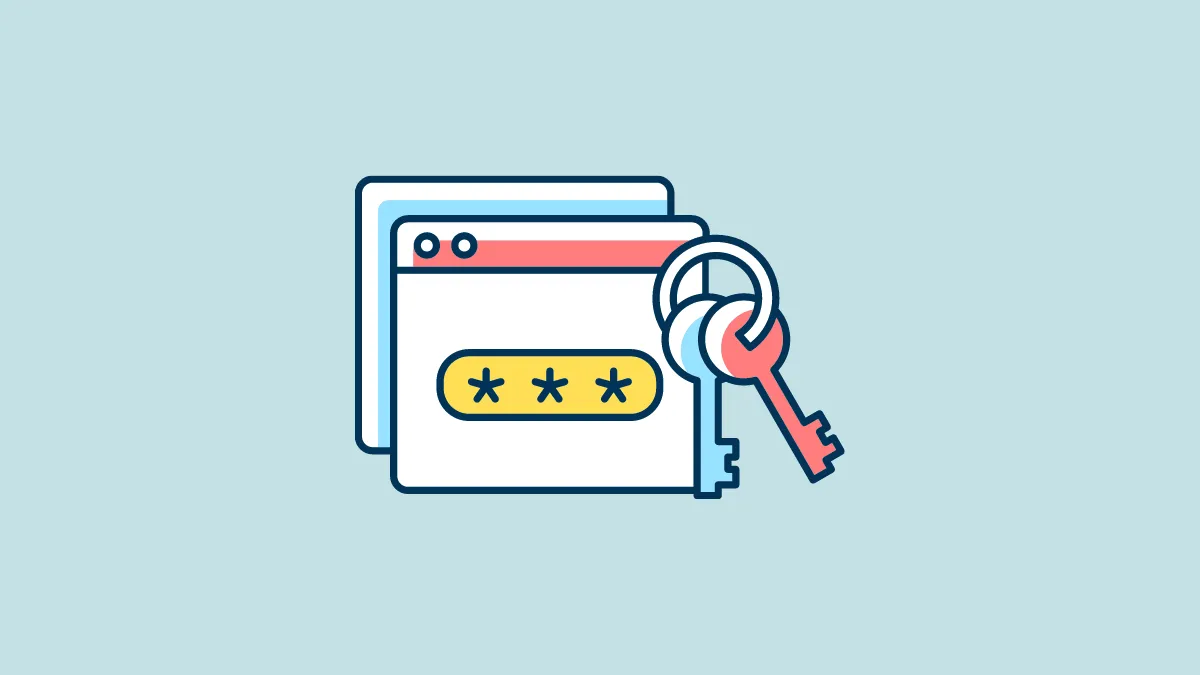Everyone knows that you shouldn’t reuse passwords. And creating strong, unique passwords on different websites comes with a problem of its own – remembering those passwords. But password managers make this job easier by taking the task off our hands.
Most browsers have an in-built password manager these days. And for users who don’t want to go on a quest to find a separate password manager, the in-built feature is more than enough. Microsoft Edge also includes this built-in tool. And it’s extremely easy to use it.
How Does It Work?
If the password manager is enabled, it will ask you to save the password whenever you log in or create an account on a new website. It also has the option to suggest strong passwords when creating new accounts that it randomly generates.
When you log in to a website for which you have previously saved a password, it’ll automatically fill in the password for you so you don’t have to do the tedious task of remembering it. This allows you to have strong, unique passwords for all websites without worrying about forgetting them.
One of the most important questions that users often ask is, “Where Does Microsoft Edge Save Passwords, and Is It Safe?” Microsoft Edge stores your passwords locally on disk after encrypting them. So, yes, they’re safe. The data is encrypted in a way that it can only be accessed when the user is logged on to the system with their user password.
Microsoft Edge also stores your passwords on the cloud (Microsoft’s servers) but only after they have been encrypted on disk. This ensures that your password never leaves your device without being encrypted. On the cloud, it stores the passwords under your account so they are available on all of your devices using the same Microsoft account if you are syncing your passwords.
Saving Passwords using the Password Manager
Using the built-in password manager in Microsoft Edge is extremely easy. But first, you need to enable it from the settings.
To enable the Password Manager, click the ‘Settings and more’ (three-dot menu) icon on the upper-right corner of the screen.
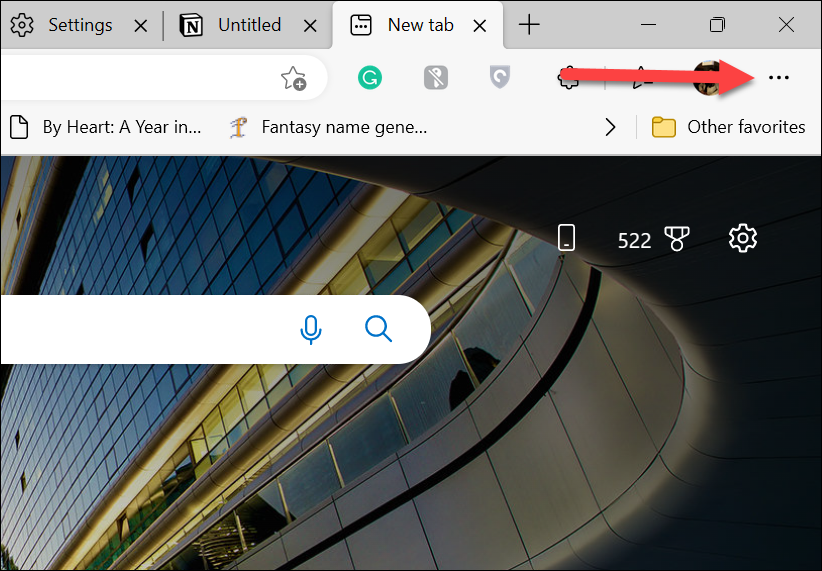
Then, select ‘Settings’ from the menu.

The Profile tab will open by default. Select ‘Passwords’ from the right pane.

Then, turn on the toggle for ‘Offer to save passwords’.
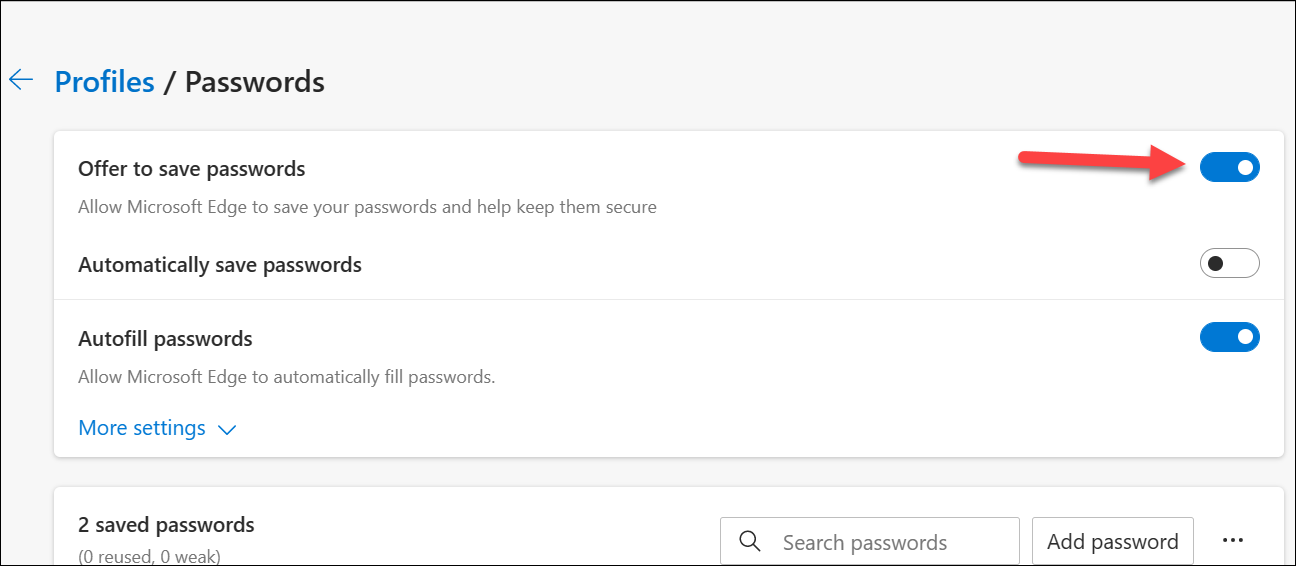
Now, the next time you’re logging in to a website (or signing up), a prompt from Microsoft Edge will appear asking if you want Microsoft Edge to save the password. Click the ‘Save’ button from the pop-up.

Instead of having to manually save passwords each time, you can also change the setting so that Edge automatically saves the password. Turn on the toggle for ‘Automatically save passwords’ from the pop-up and click ‘Save & Turn On’.

Otherwise, navigate to ‘Passwords’ from the Edge settings once again or type edge://settings/passwords in the address bar and press the Enter key. Then, turn on the toggle for ‘Automatically Save Passwords’.
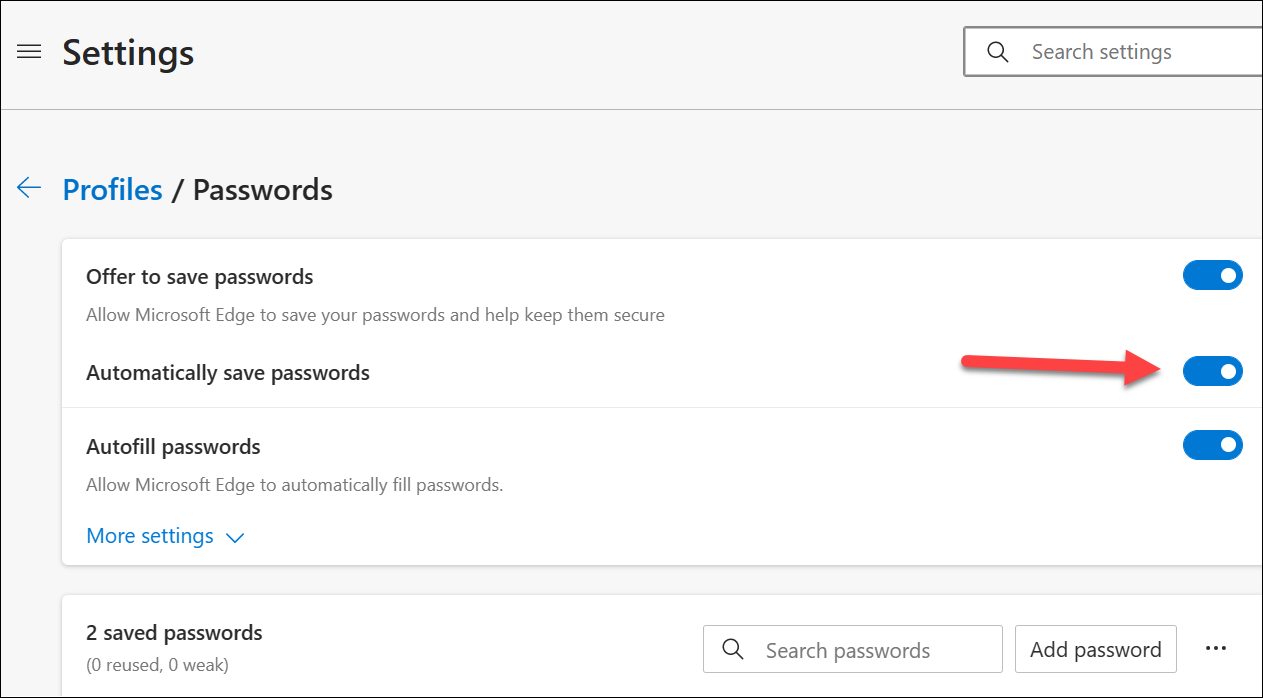
Auto-Filling your Saved Passwords
To fill passwords using the Edge Password Manager, go to edge://settings/passwords and enable the toggle for ‘Autofill Passwords’.
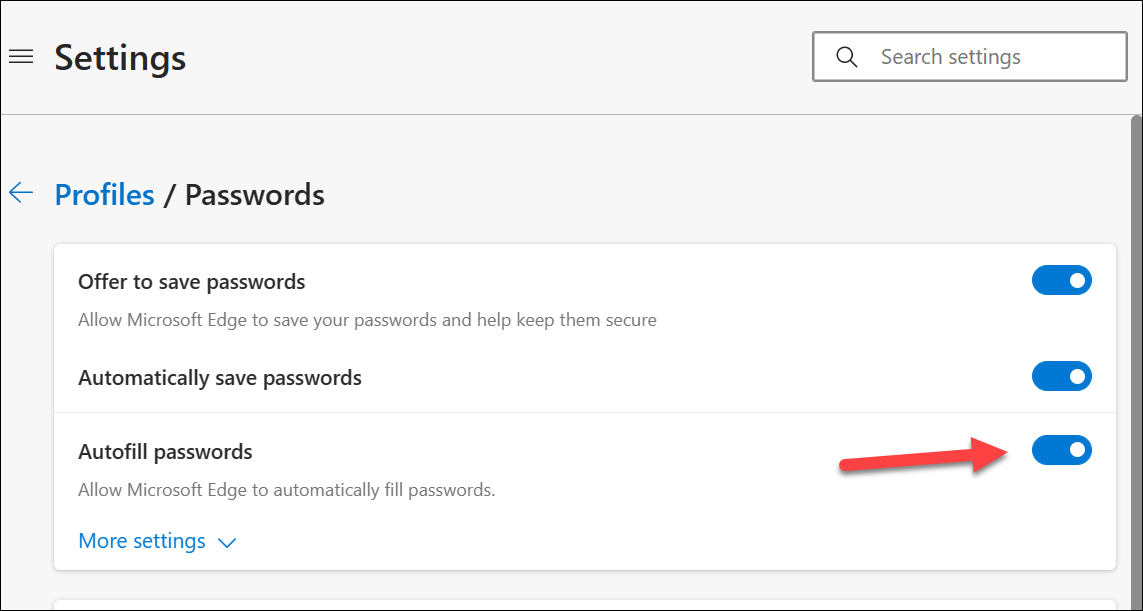
Now, the next time you try to log in to a website for which you have a password saved, Microsoft Edge will automatically fill in the saved credentials in the fields provided.
Having Edge automatically fill passwords for you can compromise security for users who often share their system with others. Anyone can log in to a website with your credentials if you let them use your system. However, you can add an additional layer of security. Instead of simply filling in the password, you can change the setting so Edge asks for your system password or a custom password to authenticate you.
From the Passwords settings page, click the ‘More Settings’ option under Autofill passwords to expand the section.
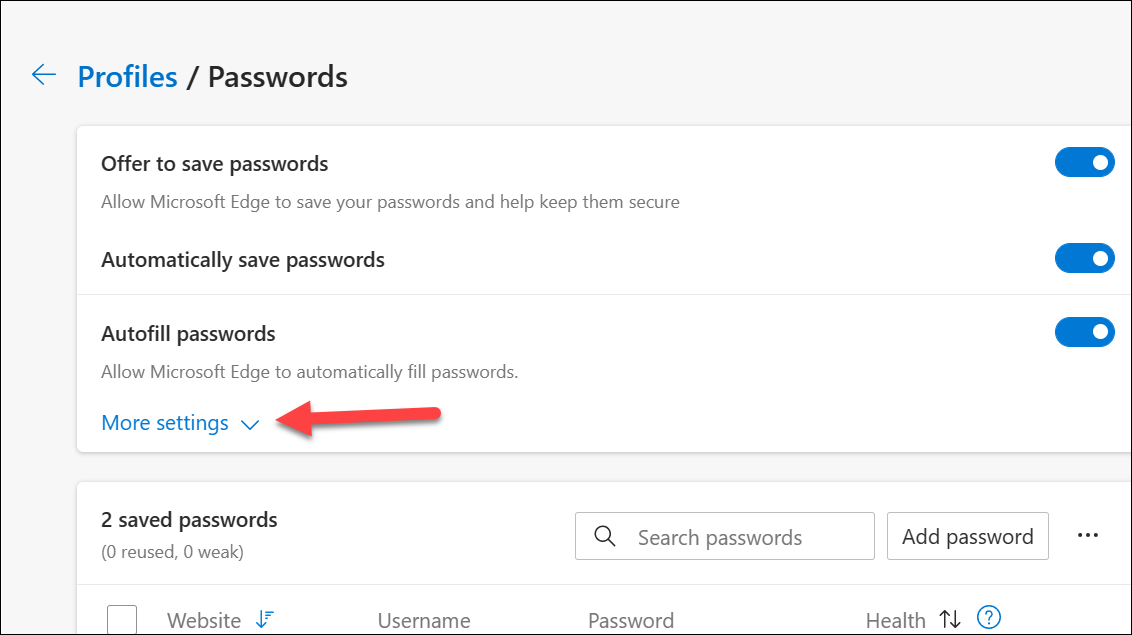
Then, choose whether you want to authenticate using your device password or a custom password and click the radio button next to that respective option.
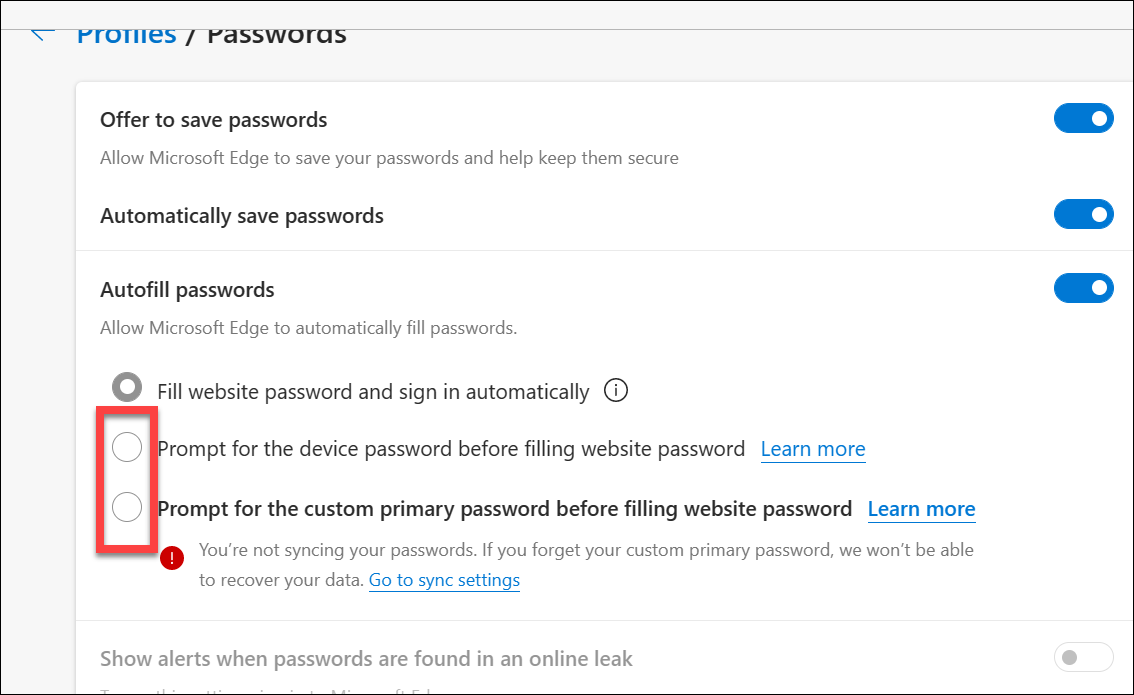
Now, select whether you want to authenticate once per browsing session or should it always ask permission from the drop-down menu.
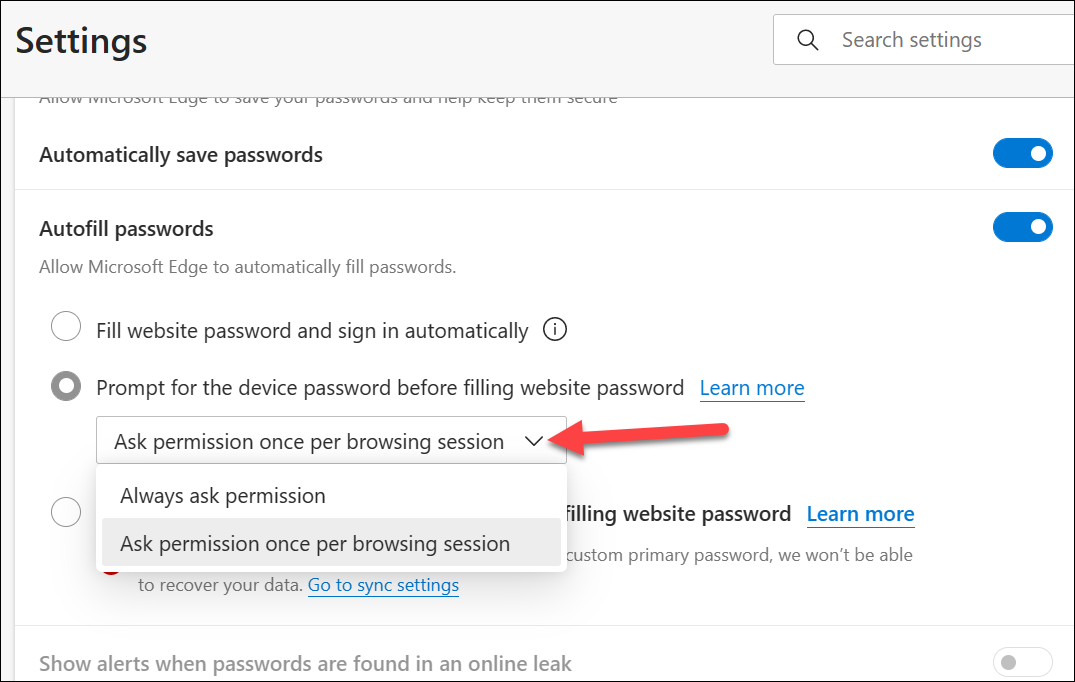
If no one else knows your system password, then you can use the device password to authenticate yourself. But if you share your system with others, it’s better to choose a custom primary password.
When using a custom primary password, you should keep some things in mind, though. A custom password is device-specific. So, even if you’re using Microsoft Edge on other devices with sync on, the primary password will not sync and you’ll have to create a separate password for each device. But it is recommended to Turn on Sync because if you forget the primary password, there is no way to recover it and your passwords will be lost.
Editing your Saved Passwords
If you change the password on a website and log in to the website on Edge with the new password, the password manager will prompt you to update it automatically. But if you don’t update the password then, you can edit it manually.
Go to Password settings and scroll down to the password you want to edit. Then, click the ‘three-dot menu’ on the right.
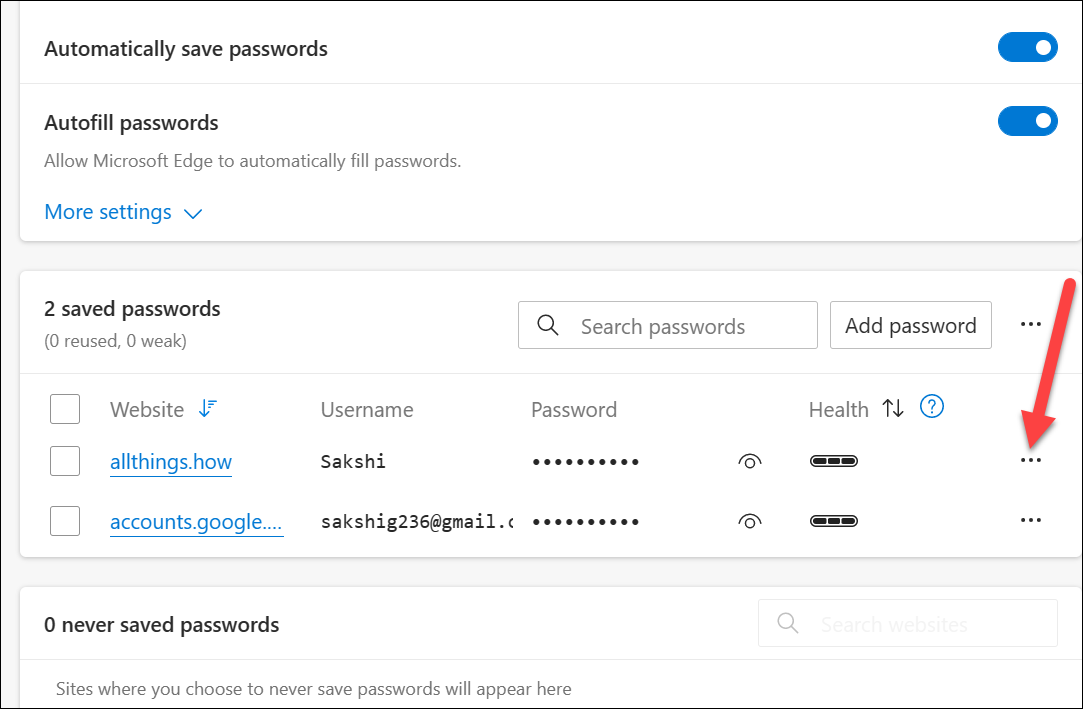
From the menu, click on the ‘Edit’ option.
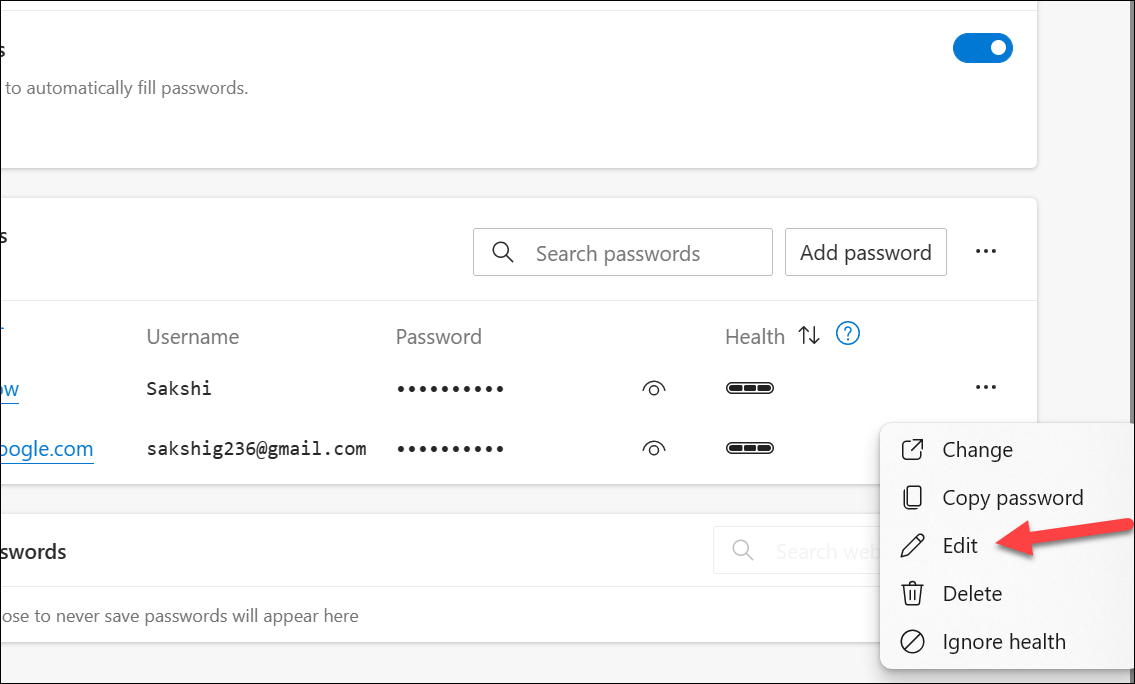
If you have a custom primary password set, you’ll need to authenticate using it. Otherwise, you’ll need to authenticate using the device password to access the password, whether or not you have device authentication for autofill turned on.
Then, make the changes and click ‘Save’.
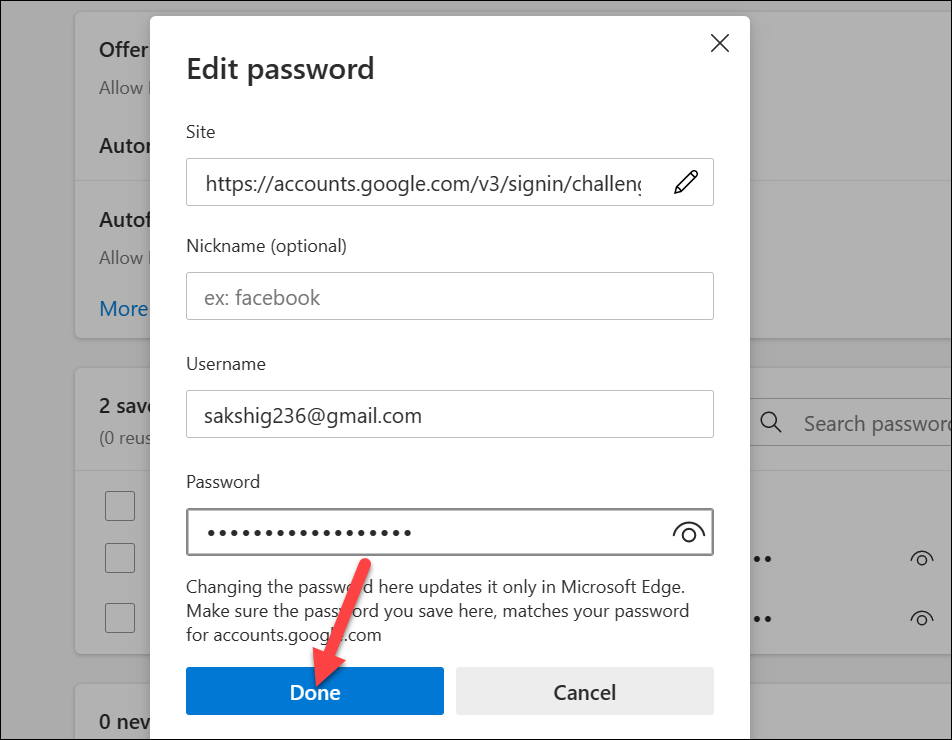
You can also delete any saved password by selecting ‘Delete’ from the menu and authenticating yourself.

The Microsoft Edge Password Manager is a great tool for securely storing and managing your passwords. If you’re reusing passwords on any websites, it’s time to start using a password manager and create unique passwords instead.

